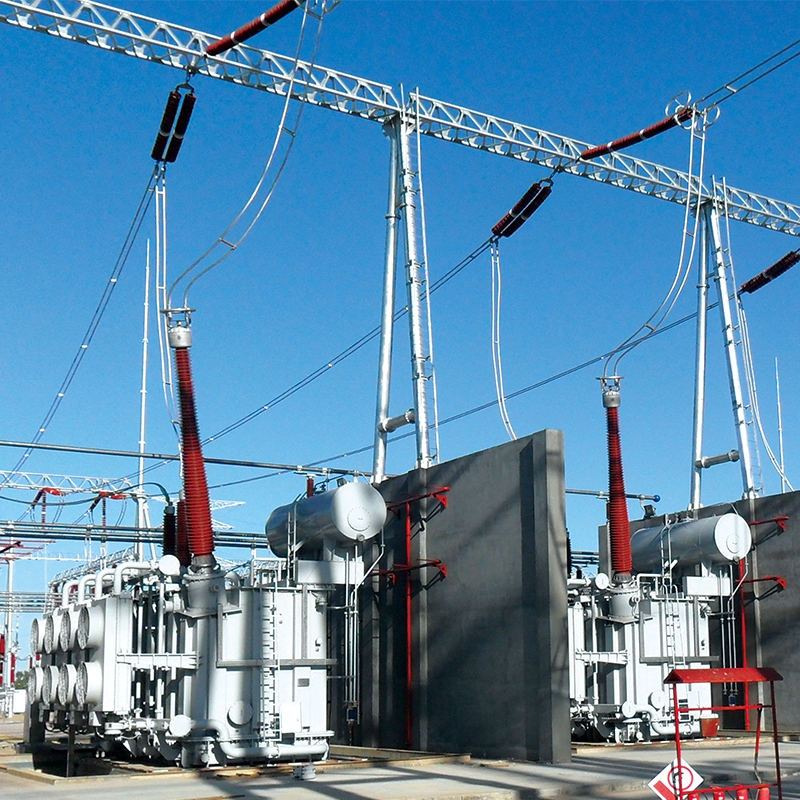Analysis and inventory of insulating materials for transformers
Insulation material is one of the most important materials in transformer, its performance and quality directly affect the reliability of transformer operation and transformer service life. In recent years, new insulation materials used in transformer products have emerged in endlessly. With the rapid development of science and technology, the application of electrical equipment such as motors and transformers is increasingly extensive. The reliability and service life of the transformer depends to a large extent on the insulation materials used. Insulation materials are becoming more and more important for transformer design and manufacturing personnel. In the past two decades, new products, new technologies and new theories of transformer insulation materials have emerged and developed continuously, which has formed a very important discipline of transformer insulation materials and its application.
Insulating materials, also known as dielectrics, are materials with high resistivity and low electrical conductivity. Insulation materials can be used to isolate conductors with electricity or different potentials, so that the current flows in a certain direction. In transformer products, insulation materials also play the role of heat dissipation, cooling, support, fixing, arc extinguishing, improving potential gradient, moisture resistance, mildew protection and conductor protection. Insulation materials are classified by voltage level: generally divided into: Y (90 ° C), A (105), E (120 ° C), B (130 ° C), F (155 ° C), H (180 ° C), C (greater than 180 ° C). The heat resistance grade of the transformer insulation material refers to the maximum temperature that the insulation material is allowed to withstand in the transformer. If the insulation material is used correctly, the service life of the material can be guaranteed for 20 years. Otherwise, it will be based on the law of 8 ° C (Class A insulation temperature increases by 8 ° C, the service life is reduced by half, Class B insulation is 10 ° C, and class H is 12 ° C. This rule is called the 8℃ rule of thermal aging) to reduce the service life. The heat resistance of the insulating material composed of high polymer is half lower than that of the inorganic dielectric. The properties of insulating materials are closely related to their molecular composition and structure. There are many kinds of transformer insulation materials, which can be divided into gas insulating materials, liquid insulating materials and solid insulating materials according to their form.
Solid insulating materials: The solid insulating materials used in transformers refer to the insulating materials that are solid in the form of the material itself or through chemical reactions and physical changes to solid. There are many kinds of solid insulating materials for transformers, such as insulating paper, insulating cardboard, Nomex paper, glued paper, electrician laminated wood, epoxy glass cloth board, low dielectric loss laminate, insulating paint, insulating glue, cotton tape, compact tape, mesh weft less polyester tape and so on.
1 Insulating paper
The insulating paper mentioned here refers to pure sulfate wood pulp paper, and other insulating papers include synthetic fiber paper (such as NOMEX paper), nitrile insulating paper (such as Denison paper), and so on.
2 Insulated crepe paper
It is made of creased insulating paper for electrical purposes. There are wrinkles along its lateral side, which are pulled apart when stretched. Due to the different creasing processing procedures, the wrinkling paper with different elongation can be made. The thickness of insulating paper is generally 0.05mm~0.12mm, and the elongation range is 5%~200%. Corrugated insulation paper is often used for wrapping insulation of oil-immersed transformers, such as winding heads,
3 Denison paper
The modified insulating paper is called nitrile paper, and in the manufacturing process, diconitrile amine, ethylene cyanide and so on are added to the pulp. Produced by the United States Denison Company, the paper is characterized by corrugations, after calendering, with a good mechanical cyanide degree and appropriate elongation, is the ideal material for large transformer winding turn insulation, using it to wrap the transposition wire can ensure that there is no expansion of the phenomenon.
4Nomex paper
It is a heat-resistant synthetic fiber paper produced by the United States DuPont company. Nomex is the trade name for this fibrous paper. The main component of Nomex is aromatic polyamide, which has good thermal aging properties. It can be used for a long time at 220 ° C and belongs to Class C insulation material.
5 Apply adhesive paper
It can be divided into three kinds: single-sided gluing paper, double-sided gluing paper and diamond grid gluing paper. Adhesive paper type is made of 0.07mm winding paper coated with phenolic resin or epoxy resin and baked and dried.
6 Metallized paper
Used for floor screen and electrostatic screen. The bottom paper is 0.2mm thick insulating paper, and the thickness of aluminum foil is 0.02mm for the insulation wrapping of the lead wire and the insulating screen.
7 Insulating board
Made of paper from sulphate wood pulp. The utility model is used for oil gap pads, partitions, cardboard tubes, corrugated paper, iron yoke insulation, clamp insulation and end insulation winding platen, etc.
8 insulated cylinder
The insulating tubes used in the transformer are phenolic rubber paper tubes, epoxy glass cloth tubes, glass steel tubes and cardboard tubes.
9 Corrugated cardboard
In the oil plate gap structure composed of multi-layer paper tube of high voltage transformer, corrugated paper board can be used instead of the stay strip to form the oil gap. This insulation structure can save insulation materials on the basis of ensuring insulation performance.
10 Electrical lamination products by paper, cloth and wood veneer as the base material, dipped in different adhesives, by hot pressing or rolling made of layered structure insulation material. 11Nomex cardboard
A paper board made from a synthetic material based on aromatic amide fibers.
12 Draw the rod
The interstage rod, air gap brace, screw and screw of the dry type transformer core column are often drawn by glass wire rod.
13 Electrical thin molds and electrical composite materials
It has excellent dielectric properties and belongs to thin sheet insulating materials. Electrical films include polypropylene film, polyester film and polyimide film. Composite materials are composite products made from one or both sides of a thin film bonded to a fibrous material.
14 Glass varnished cloth
Glass varnished cloth is a non-alkali glass cloth used by electricians soaked in insulating paint and baked. For dry transformers.
15 Insulation materials for binding transformers
The insulating materials used for transformer binding include cotton tape, compact tape, semi-dry thin wire tape, mesh semi-dry weft less tape, glass cloth tape and polyester rope.




